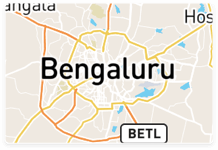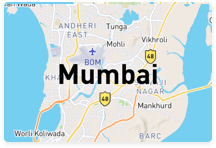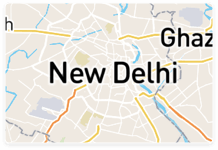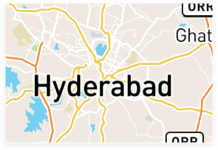Estimated Fees in India
₹ 500 to ₹ 600 per hour
Find Clay Modeling Classes Fees in your locality
INDOSS is the premier institute offering Nursery or Primary Teacher Training Courses ( NTT, PTT & NPTT ), B.Ed ( Admission Guidance ),Coaching Classes for MBA & B.Ed, Graduation & Post Graduation Courses, Foreign Language Courses. We offer full-time, part-time and distance learning courses with contact programs and practical workshops. Consultancy services are offered to schools which need improvement and strive towards greater excellence. The placement cell assists employers to recruit qualified montessorians and helps teachers find jobs, worldwide. Admission Open-2011 1 year Program in Nursery Teacher Training 1 year Program in Primary Teacher training 1 year B.Ed(Admission Assistance) 100% placement assistance 1 month training in school UGC recognised University
PlayGym is a creative, joyful and energetic play space and Activity Center for children of all ages. PlayGym has a variety of activities: Play equipment with rock climbing (wall), trampolines, boxing, soft play area (for toddlers), indoor tennis,& football, hopping balls, hula hoops, ribbon dance, climbing ropes, climbing nets & much more! PlayGym also conducts regular classes for Gymnastics, Football, Tennis, Dance (both contemporary & classical), Arts and Crafts, Karate and other forms of Martial arts, etc.
Welcome to varna art centre . You have opened the page which definitely gives you utter most experience in knowing the things about the only organization where one can definitely learn and bring out their hidden talents under the guidance of artists with an enormous experience in the field of art. We are into this field of teaching not only because we want continue the legacy of art but its our passion. with an experience of more than 25 yrs we inspire the students to develop their talent in what ever art field they are interested. In our organization apart from painting we encourage the children in other fields of art also. Every year we encourage the children by conducting competitions in our campus and giving away the prizes to the winners along with the certificates. We are supporting the poor children who are interested in the art field by encouraging them giving the training along with the material free. In our organization one can learn from basics to the highest level of painting. We teach different types of painting like basic sketching ( foundation course ), water colour painting ( module 1), oil & acrylic colour painting (module 2), pot painting, glass painting, clay painting, clay modeling, craft works etc.
Post your Learning Need
Get customized quotes and responses from Tutors
Choose & Learn from Tutor of your choice

No data available

No data available

No data available

No data available

No data available

No data available
Answered on 02/01/2024 Learn Art and Creativity/Clay Modeling

Sadika
Clay models are used in the automotive industry and other design fields for various purposes throughout the product development process. Here are some of the key uses of clay models:
Design Evaluation:
Form Exploration:
Ergonomics and Human Interaction:
Wind Tunnel Testing:
Presentation to Stakeholders:
Decision Making:
Photorealistic Rendering:
Collaboration and Communication:
Prototype for Production:
While digital design tools and virtual simulations have become more prevalent, clay models remain a valuable part of the design process, offering a hands-on, physical representation that complements the capabilities of digital design.
Answered on 02/01/2024 Learn Art and Creativity/Clay Modeling

Sadika
The process of hardening modeling clay depends on the type of clay you are using. There are various types of modeling clay, including air-dry clay and oven-bake clay (polymer clay). Here are instructions for hardening each type:
Sculpt Your Object:
Air-Dry Naturally:
Turn and Rotate:
Check for Dryness:
Sculpt Your Object:
Preheat the Oven:
Prepare Baking Surface:
Place the Object:
Baking Time:
Cooling:
Follow Manufacturer's Instructions:
Ventilation:
Post-Hardening Finishing:
Keep in mind that each type of clay has its own characteristics, and the hardening process may vary. Always refer to the instructions on the clay's packaging or the manufacturer's guidelines for best results.
Answered on 02/01/2024 Learn Art and Creativity/Clay Modeling

Sadika
Baking modeling clay depends on the type of clay you are using. There are two main types: air-dry clay and oven-bake clay (also known as polymer clay). Here are instructions for baking each type:
Sculpt Your Object:
Drying Time:
Check for Dryness:
Sculpt Your Object:
Preheat the Oven:
Prepare Baking Surface:
Place the Object:
Baking Time:
Cooling:
Temperature Control:
Ventilation:
Avoid Over-baking:
Post-Baking Finishing:
Always refer to the specific instructions provided by the manufacturer of the clay you are using. Different brands and types of clay may have slightly different baking requirements.
Have a question about Clay Modeling Classes Fees? Ask your question and get answers from top Tutors.
Create your FREE UrbanPro profile and grow your income!
Find best tutors for Clay Modeling Classes by posting a requirement.

Get started now, by booking a Free Demo Class